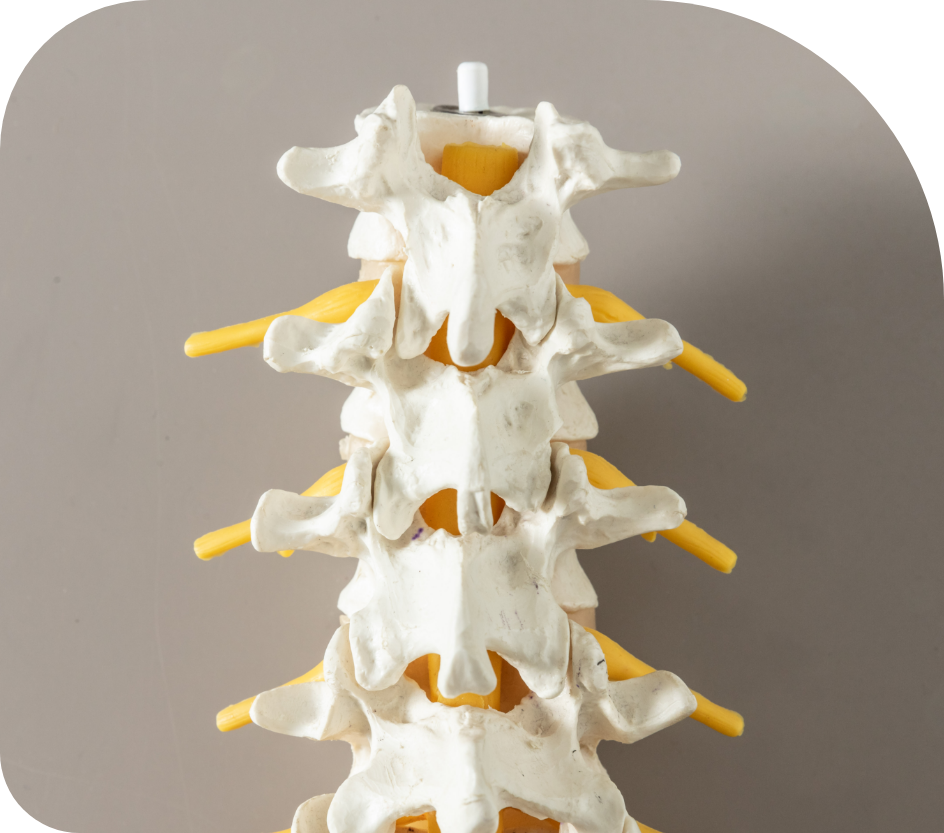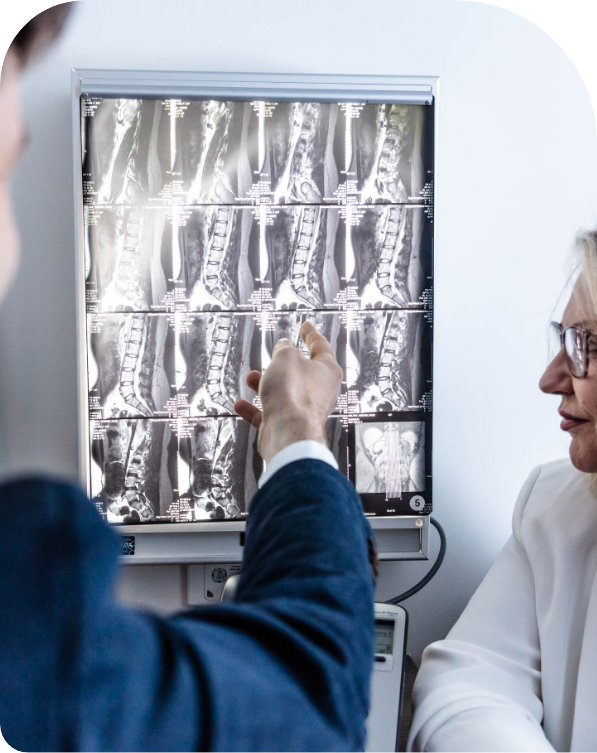Syringomyelia

Syringomyelia is a condition in which a fluid-filled cyst (syrinx) forms inside the spinal cord.
This disease continues to perplex doctors and researchers, as it is unclear how cerebrospinal fluid (CSF) enters the spinal cord to produce a syrinx. Neurosurgeons from Macquarie Neurosurgery & Spine are involved in ongoing research regarding the causes and management of this rare disease.

What do we know about the causes of syringomyelia?
Chiari malformation is the most common underlying cause of syringomyelia. Chiari malformation is a congenital condition in which brain tissue extends below the hole at the base of the skull. This blocks the normal flow of cerebrospinal fluid (CSF) around the brain and spinal cord. Although a person is born with Chiari malformation, symptoms of syringomyelia typically develop between 25 and 40 years of age.
Spinal cord injury is another important cause of syringomyelia. Syringomyelia could develop months, or even years, after a spinal injury.
Other causes of syringomyelia include tumours, infections, and previous haemorrhage of the spinal cord. In some cases of syringomyelia, no clear cause is found.

What are the symptoms of syringomyelia?
As a syrinx grows, it can damage the spinal cord and affect the nerve fibres that carry information to and from the brain.
Symptoms could include:
- Back, arm or leg pain
- Headaches
- Progressive weakness (together with muscle stiffness) in the arms and legs
- Skin numbness or tingling
- Loss of sensitivity to pain, heat or cold, especially in the hands
- Balance problems
- Loss of bowel and bladder control
- Sexual difficulties
- Scoliosis (in children)

How is syringomyelia diagnosed?
Syringomyelia is most often diagnosed with an MRI scan.
Some patients with syringomyelia have abnormal membranes around the spinal cord which can interfere with the flow of CSF. These membranes may not always be visible on conventional MRI scanners.
The neurosurgical team at Macquarie Neurosurgery & Spine works hand-in-hand with the neuroradiologists team at MMI and have access to sophisticated technology that can detect these membranes and help the specialists plan treatment.
What is the treatment of syringomyelia?
Treatment of syringomyelia depends on its symptoms and underlying cause. At Macquarie Neurosurgery & Spine, patients with this condition can expect to receive individualised treatment from a highly skilled multidisciplinary team.
If the syringomyelia is causing no, or only mild symptoms, an approach of “watchful waiting” may be adopted.
In most cases, syringomyelia requires surgery. Surgery may be done to address the underlying cause of the spinal cord cysts. For example, if a patient has Chiari Malformation (type I), surgery can be done to expand the base of the skull and create a normal flow of CSF around the brain and spinal cord.
Syringomyelia surgery may also be required to relieve pressure on the spinal cord, to prevent further neurological damage. This is done by inserting a small flexible tube (a shunt) to drain the syrinx. Specialists at Macquarie Neurosurgery & Spine are highly skilled in this technically challenging procedure.
What is the prognosis of syringomyelia?
The outlook for people with syringomyelia may vary. Successful surgery can prevent further damage to the spinal cord. There may be partial improvement of previous symptoms, but full recovery may not always be possible. Physiotherapy after surgery can help to optimise recovery. Patients who have had successful treatment require ongoing monitoring, as syringomyelia can recur.
At Macquarie Neurosurgery & Spine, patients with syringomyelia receive treatment from neurosurgeons who are highly experienced in the management of rare conditions.
